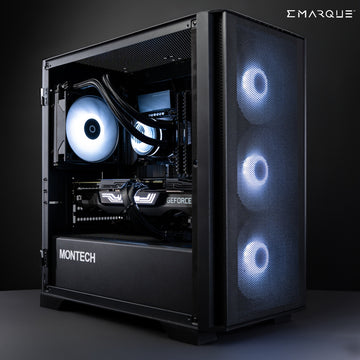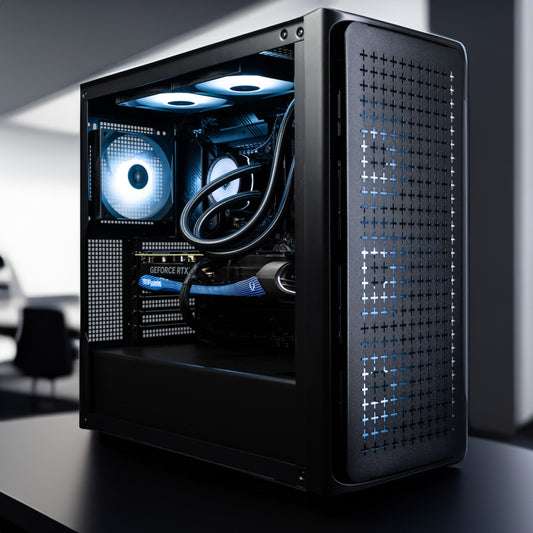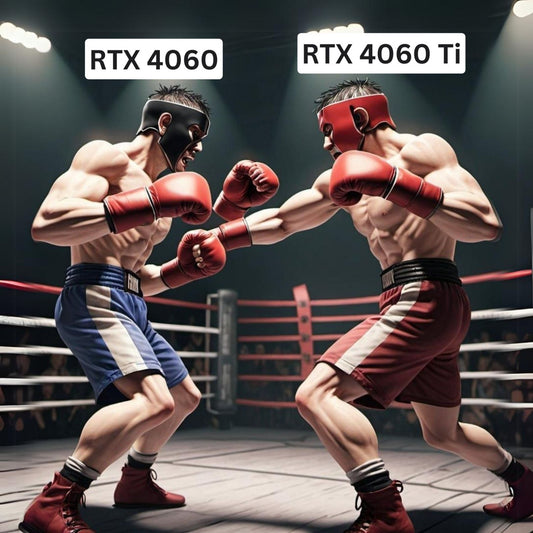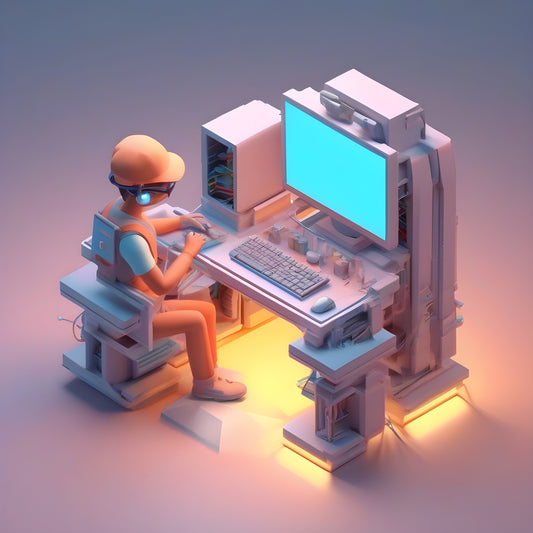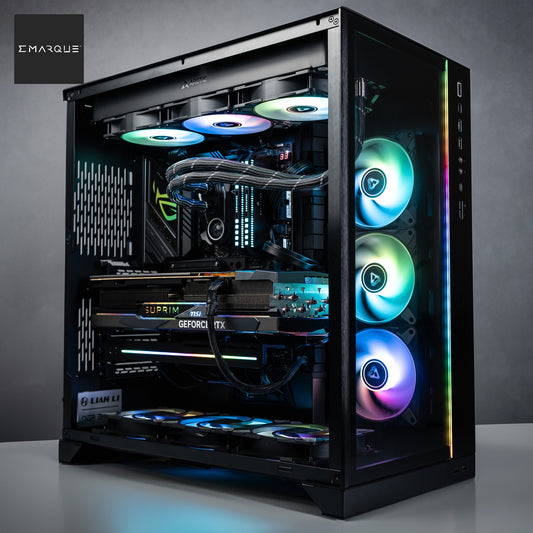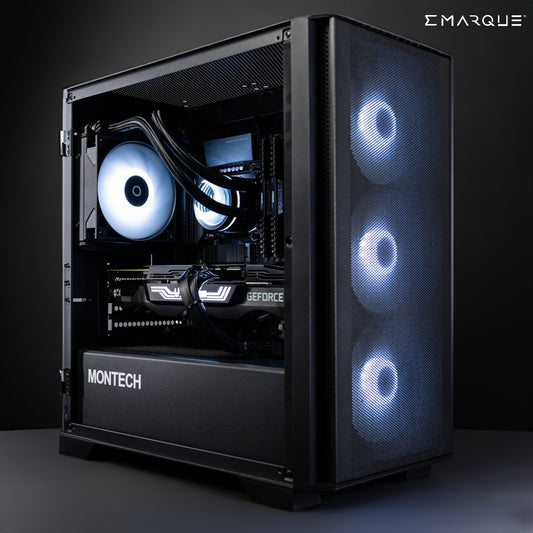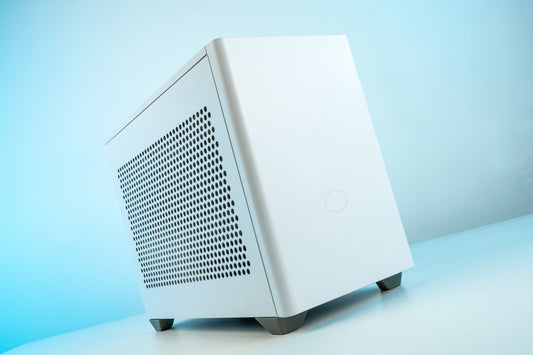Building a mini ITX in 2024
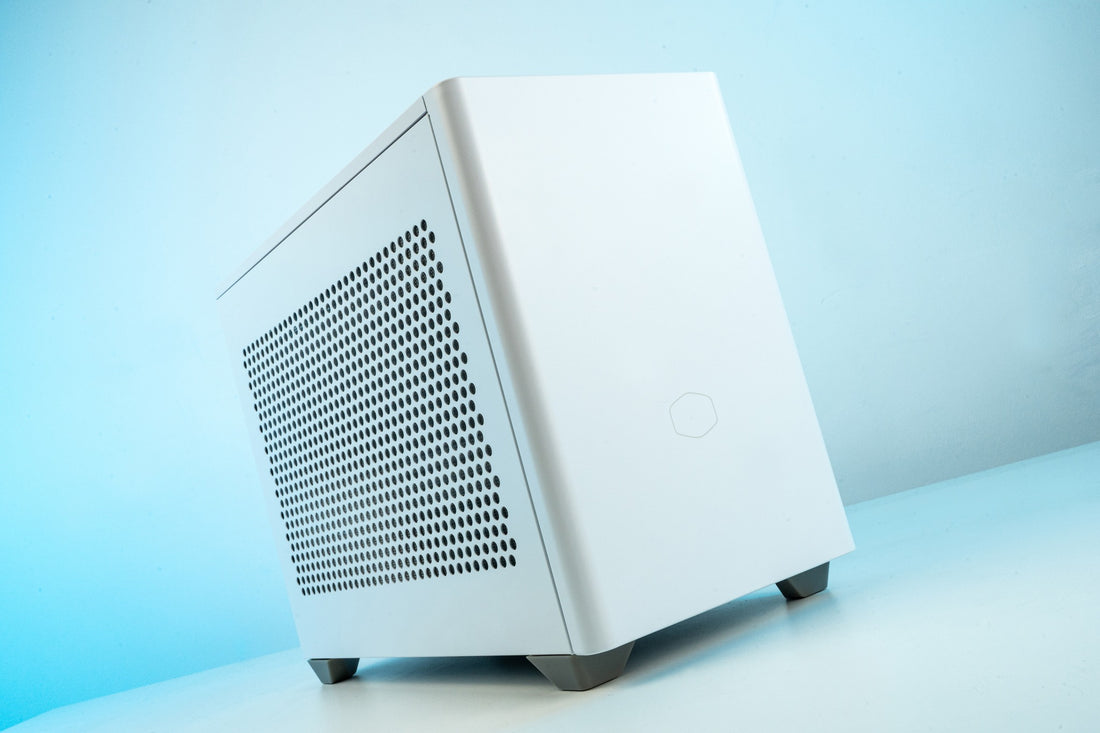
What Is a Mini ITX?
Mini ITX, short for Mini-Information Technology eXtended also known as Mini Gaming PC, is a small motherboard form factor developed by VIA Technologies in 2001. It is designed to be smaller than the standard ATX or micro-ATX motherboards, offering a compact solution for building PCs.
The inception of Mini ITX revolutionized the computing industry by introducing a compact size that proved to be ideal for small form factor builds, home theater PCs, and other space-constrained setups. Its compact design, measuring just 170mm x 170mm, enables it to fit into smaller chassis without compromising on performance.
Mini ITX boards are known for their efficiency in managing power consumption, making them eco-friendly options for those looking to reduce their carbon footprint. Their smaller size doesn't mean sacrificing functionality; these boards come equipped with the necessary features for a well-rounded computing experience, including slots for RAM, GPU, and storage.
Why Build a Mini ITX?
Building a Mini ITX system provides several benefits, including space-saving, portability, and enhanced aesthetics. These factors make it an attractive choice for users looking to create a compact and powerful PC setup.
One of the key advantages of opting for a Mini ITX build is its space efficiency. With its compact design, Mini ITX motherboards take up significantly less space compared to larger form factors such as ATX or E-ATX, allowing users to maximize their workspace. Not only does this save physical space, but it also offers a clean and clutter-free setup.
The portability of Mini ITX systems is another noteworthy aspect. These compact builds are lightweight and easy to transport, making them ideal for LAN parties, gaming tournaments, or simply moving from one room to another. The convenience of being able to carry your powerful PC wherever you go is a major selling point for many users.
The aesthetics of a Mini ITX setup contribute to its appeal. The sleek and modern look of these small form factor builds can enhance the overall visual appeal of your workstation or gaming setup. Whether you prefer a minimalist design or want to showcase your components in a compact case, Mini ITX systems offer a stylish solution.
Space-saving
The primary advantage of Mini ITX builds is their space-saving nature. These compact systems are ideal for users with limited desk or room space, allowing for a powerful PC setup in a small footprint.
Mini ITX builds are designed to be compact and desk-friendly, making them perfect for small environments like dorm rooms, home offices, or setups where space optimization is crucial. Despite their small size, these systems can still pack quite a punch in terms of performance, catering to both casual users and hardcore gamers.
Portability
Mini ITX systems offer excellent portability compared to larger form factors. They are easy to transport, making them ideal for LAN parties, gaming tournaments, or users who need a PC that can be moved around conveniently.
These compact setups are not only lightweight but also sleek and versatile, allowing users to set up their gaming rigs effortlessly at various locations. The size of Mini ITX systems often makes them more manageable to carry to gaming events or meet-ups, providing a hassle-free experience for users who are always on the move.
Portability is a significant advantage of Mini ITX systems, as they can easily fit into a backpack or small carrying case, enabling gamers to bring their powerful setups wherever they go.
Aesthetics
Mini ITX builds are known for their sleek and modern aesthetics. The compact size allows for creative case designs and setups, enhancing the visual appeal of the PC while maintaining high performance.
Mini ITX systems often feature stylish appearances that catch the eye of many PC enthusiasts. These compact builds offer a wide range of customizable case options, from minimalist to extravagant, catering to various tastes and preferences. The sleek design of Mini ITX cases not only saves space but also adds a touch of elegance to any setup. Enthusiasts can explore endless possibilities for creating visually striking PC builds by utilizing the small yet versatile Mini ITX form factor. This has led to a trend of inspiring and creative setups that showcase both functionality and beauty.
What Are the Components Needed for a Mini ITX Build?
To build a Mini ITX system, you will need essential components like a compact Mini-ITX motherboard, a compatible CPU, sufficient RAM, storage options such as SSDs, a compact GPU, a power supply unit suitable for small form factors, and a compact case that fits the Mini ITX specifications.
When selecting a Mini-ITX motherboard, make sure it has the necessary slots for your storage, RAM, and GPU. Compatibility with your chosen CPU is crucial. Opt for a CPU that balances power and heat output effectively. For RAM, choose modules that meet your system's requirements without compromising on speed and capacity.
SSDs offer speed and efficiency, making them ideal for compact builds. When picking a GPU, consider its size and power requirements. A power supply unit with a high efficiency rating is advisable to avoid overheating in smaller cases. Ensure your compact case allows proper airflow and cable management for optimal performance.
Motherboard
The Mini ITX motherboard is the foundation of a compact build, offering a small form factor with limited expansion slots but crucial connectivity options for other components.
By selecting the right Mini ITX motherboard, builders can harness the power of a compact design without compromising on performance. These motherboards are designed to fit seamlessly into small PC cases, making them perfect for space-constrained environments. Their compact size allows users to create sleek and portable systems without sacrificing connectivity or functionality.
Despite their small stature, Mini ITX motherboards often come equipped with a variety of connectivity features, including USB ports, HDMI outputs, and audio jacks. These vital connections enable users to easily link up their peripherals and accessories, enhancing the overall usability of the system.
CPU
Selecting a compatible CPU for a Mini ITX build is essential to balance performance and thermals in a compact setup. Opt for CPUs that offer a good performance-to-power ratio and are suitable for small form factor cooling solutions.
These compact motherboards have limited space for components, making the selection of an efficient CPU crucial. A CPU that can handle intensive tasks without overheating is vital for maintaining a stable system in a confined space.
Efficient thermal management is key in Mini ITX builds to prevent heat build-up and ensure longevity of components. Low-profile coolers or all-in-one liquid cooling solutions are popular choices to address thermal constraints efficiently.
RAM
RAM plays a vital role in Mini ITX systems, providing memory for multitasking and applications. Choose RAM modules that offer a balance between capacity and speed, ensuring compatibility with the motherboard's form factor.
When selecting RAM for a Mini ITX build, it's crucial to consider the memory capacity needed to support your computing tasks. Higher memory capacity allows for smoother multitasking and seamless operation of resource-intensive applications.
Speed considerations are equally important as they determine how fast data can be accessed and processed. Opting for RAM modules with higher speeds can significantly enhance the overall performance of your system, especially when dealing with demanding software or gaming.
Compatibility with the compact motherboard form factor is essential to ensure that the RAM fits properly within the limited space available in Mini ITX setups. Choosing low-profile or small-form-factor RAM modules can prevent any physical interference issues and promote efficient airflow for better cooling.
Storage
Storage options in Mini ITX builds often include SSDs for fast boot times and application loading. Opt for compact SSDs that fit the small form factor while considering storage capacity and speed requirements.
Regarding Mini ITX builds, space is at a premium, making the choice of SSD crucial. The compact size of SSDs not only saves space but also contributes to better airflow within the chassis, aiding in cooling. SSDs offer quicker access times and data transfer speeds compared to traditional HDDs, enhancing overall system performance.
Storage capacity should be carefully assessed based on your usage needs, striking the right balance between storing essential data and keeping the system responsive. With the right SSD choice, you can experience faster boot times, seamless multitasking, and improved efficiency in a compact setup.
GPU
Selecting a compact GPU for a Mini ITX build is crucial for gaming performance and visual quality. Look for GPUs that fit the small form factor case while delivering sufficient graphics power for your gaming needs.
Consider the dimensions and cooling solutions of the GPU to ensure it fits seamlessly into your Mini ITX case without overheating. Squeezing powerful components into a compact space requires thoughtful consideration to avoid bottlenecks or compatibility issues. Some popular compact GPU options include the NVIDIA GeForce RTX 3060 Ti and the AMD Radeon RX 6700 XT, which offer an excellent balance of performance and size for Mini ITX systems. These GPUs pack a punch in terms of performance while being tailored for smaller builds.
Power Supply
Choosing the right power supply unit (PSU) is crucial for Mini ITX builds to ensure stable power delivery in a compact setup. Opt for a PSU that fits the small form factor case and provides sufficient wattage for all components.
Regarding Mini ITX configurations, the PSU acts as the backbone supporting the entire system. Not only does it need to supply the necessary wattage for the CPU, GPU, and other components, but it also plays a vital role in maintaining system stability and longevity. A reliable PSU with adequate wattage capacity ensures that your components receive clean and consistent power, minimizing the risk of malfunctions or damage due to power fluctuations.
Compact PSU options specifically designed for Mini ITX setups are ideal choices, as they are tailored to fit the limited space inside these cases while still delivering the required power output. Compatibility is key when selecting a PSU for a Mini ITX build to avoid any physical constraints or installation issues. Ensuring that the PSU you choose meets the wattage requirements of your components and is designed to work efficiently within the confines of a small form factor case is essential for a successful Mini ITX build.
Case
The choice of case is critical in Mini ITX builds as it determines the overall aesthetics and cooling efficiency of the system. Look for cases that support the Mini ITX form factor and offer sufficient airflow for optimal performance.
When selecting a case for your Mini ITX setup, airflow optimization is key to ensure effective cooling, especially in compact designs. A well-ventilated case with strategically placed intake and exhaust fans can help dissipate heat efficiently, preventing thermal throttling and ensuring your components run smoothly.
The compatibility of the case with Mini ITX components is crucial to avoid issues with fitment and cable management. Some Mini ITX cases offer innovative layouts and cable routing options that make building and maintenance a breeze.
What Are the Factors to Consider When Choosing Components for a Mini ITX Build?
When selecting components for a Mini ITX build, factors such as size and compatibility, cooling system efficiency, power consumption, and budget constraints play a crucial role in ensuring a successful and optimized compact PC setup.
Mini ITX builds require meticulous planning to fit all essential components into a compact space without compromising performance.
Compatibility is paramount, ensuring that the motherboard, graphics card, CPU cooler, and power supply all work seamlessly together.
Efficient cooling solutions are vital in such a confined space to prevent overheating and maintain system stability.
Prioritizing energy efficiency not only reduces power consumption but also contributes to a quieter and more sustainable build.
Careful financial planning is essential to strike a balance between quality components and cost-effectiveness.
Size and Compatibility
Size and compatibility are paramount concerns when building a Mini ITX system. Ensure that all components, including the motherboard, GPU, and cooling solutions, are compatible with the compact form factor case to avoid fitment issues.
Component alignment plays a crucial role in Mini ITX configurations, as improper sizing or mismatched components can lead to significant installation problems.
Form factor compatibility is key, ensuring that each part fits seamlessly within the limited space of a Mini ITX case. GPU dimensions, the height of the CPU cooler, and the size of the power supply must all align with the case's size restrictions to guarantee a successful build. This attention to detail not only prevents hardware conflicts but also enhances airflow and overall system performance.
Cooling System
Efficient cooling is vital in Mini ITX builds due to the compact space constraints. Opt for small form factor coolers, case fans, and adequate airflow design to maintain optimal temperatures and prevent thermal throttling.
When dealing with thermal management in Mini ITX setups, it's crucial to focus on more than just individual components. The overall airflow design plays a significant role in ensuring that heat is effectively dissipated throughout the system, avoiding hotspots that can affect performance. To further enhance thermal performance, consider innovative compact cooling solutions that are specifically designed for small form factor builds.
By implementing a strategic airflow design and incorporating efficient cooling solutions, Mini ITX enthusiasts can maximize the potential of their compact setups without compromising on thermal efficiency. These measures not only contribute to maintaining stable temperatures but also extend the longevity of components by minimizing heat-related stress.
Power Efficiency
Selecting power-efficient components is crucial for Mini ITX builds to minimize energy consumption and heat generation. Opt for energy-efficient CPUs, GPUs, and power supplies to achieve a balance between performance and energy savings.
By carefully choosing components with power optimization in mind, users can not only lower their electricity bills but also reduce the overall environmental impact of their system. Power-efficient components are designed to operate with minimal power consumption, generating less heat and contributing to a more sustainable computing environment.
Budget
Setting a budget is essential when planning a Mini ITX build to ensure cost-effective component selection. Balance performance requirements with financial constraints to create a compact PC setup that meets your needs without overspending.
By carefully considering your budget, you can prioritize components that provide the most value for money. Opting for budget-friendly components such as entry-level graphics cards and mid-range processors can help you achieve a balance between performance and affordability. Planning your Mini ITX build with a focus on financial prudence allows you to save costs without compromising on quality.
Implementing smart financial planning strategies, like taking advantage of discounts, rebates, and combo deals, can further reduce the overall cost of your build. In addition, researching and comparing prices from different retailers enable you to make informed decisions and secure the best deals for your Mini ITX build.
How to Build a Mini ITX in 2024?
Building a Mini ITX system in 2024 requires careful selection of components, meticulous assembly, proper OS installation, and thorough testing and troubleshooting to ensure a successful and functional compact PC build.
When selecting components for your Mini ITX system, consider the form factor constraints, ensuring compatibility with your chosen motherboard and case. Look for a powerful yet efficient CPU, GPU, and sufficient RAM for your intended usage. Quality and compatibility are key here.
During assembly, handling delicate components with care is crucial. Secure the motherboard, CPU, and RAM properly, and manage cables efficiently to maintain good airflow and aesthetics. Utilize proper thermal paste application techniques for optimal cooling.
Choose the Right Components
Selecting the right components is the first step in building a Mini ITX system. Ensure compatibility, performance, and aesthetics align with your build goals for a successful compact PC setup.
Compatibility verification is vital; ensure your chosen components fit together seamlessly. Consider factors like motherboard size, power supply dimensions, and GPU length to avoid compatibility issues.
Performance optimization is key; prioritize components with the right balance of power and efficiency. Select a CPU and GPU that meet your processing needs without overloading your Mini ITX setup.
Building a compact PC offers unique challenges but also opens up opportunities for creative design. Focus on aesthetic coherence by choosing components that not only perform well but also complement each other visually.
Assemble the Components
Assembling the components in a Mini ITX build requires attention to detail and proper handling to avoid damage. Follow the manufacturer's instructions, utilize cable management techniques, and ensure a secure fit for all components.
When starting the assembly process, it is crucial to have a clean and organized workspace to prevent losing any tiny components. Begin by mounting the motherboard onto the case carefully, ensuring proper alignment with the I/O shield. Secure it in place using the designated screws provided in the motherboard's packaging.
Next, install the CPU, RAM, and storage devices following the assembly procedures outlined in the user manual. Pay close attention to cable routing to maintain good airflow and prevent any interference with moving parts.
- When connecting the power supply, route cables neatly to avoid clutter and improve the overall appearance of the build.
- Securing the GPU and other expansion cards with screws or brackets will ensure they stay in place during transportation or movement.
Install the Operating System
Installing the operating system is a crucial step in finalizing a Mini ITX build. Ensure proper OS installation, driver updates, and system configurations to optimize performance and functionality.
Once you have assembled the hardware components of your Mini ITX build, the next step is to embark on the OS installation process. This involves creating a bootable USB drive with the chosen operating system image and booting the system from it. Follow the on-screen prompts to install the OS, ensuring you select the correct storage drive for installation. After the OS is installed, it is essential to manage drivers by installing the necessary drivers for components such as the motherboard, graphics card, and peripherals. This ensures proper functionality and compatibility.
System configuration plays a vital role in ensuring a seamless user experience on your Mini ITX build. Customize settings such as display resolution, power management, and network preferences according to your needs. Take the time to update the OS with the latest patches and security updates to enhance stability and security. By meticulously following these steps for OS installation, driver management, and system configuration, you can set up your Mini ITX build for optimal performance and a smooth user experience.
Test and Troubleshoot
After assembly and OS installation, thorough testing and troubleshooting are essential to ensure the Mini ITX system functions correctly. Conduct stress tests, check hardware compatibility, and address any issues promptly for a stable build.
Testing a Mini ITX build involves subjecting the system to various stress tests such as CPU and GPU benchmarks to evaluate performance under demanding conditions. This step is crucial in identifying any potential hardware or configuration issues that may impede the system's stability over time.
Hardware validation is key to ensuring that all components, including RAM, storage devices, and peripherals, are compatible and functioning properly within the confined space of a Mini ITX case.
By implementing effective troubleshooting techniques, such as checking for driver conflicts or updating firmware, users can proactively resolve issues before they escalate, ultimately guaranteeing a smoother and more reliable computing experience.
Key Takeaways:
- Mini ITX builds are compact and portable, making them perfect for space-saving and on-the-go use.
- When choosing components for a mini ITX build, consider size, cooling, power efficiency, and budget.
- Building a mini ITX in 2024 requires choosing the right components, assembling them, installing the OS, and testing for any issues.
Frequently Asked Questions
What is a mini ITX and why should I consider building one in 2024?
A mini ITX is a small form factor desktop computer that is designed to be compact and portable. It is a great option for those who have limited space or need a computer that can easily be moved around. Building a mini ITX in 2024 is a great idea because it allows you to have a powerful and efficient computer that takes up less space and is more portable than a traditional desktop.
What are the benefits of building a mini ITX in 2024?
There are several benefits to building a mini ITX in 2024. Firstly, it is a more space-efficient option compared to traditional desktops. It also allows for more customization and upgrade options, as well as being more energy-efficient. Additionally, mini ITX builds are often more budget-friendly and can still provide high performance.
What components do I need to build a mini ITX in 2024?
To build a mini ITX in 2024, you will need a mini ITX motherboard, a small form factor case, a power supply, CPU, RAM, storage, and a graphics card (if desired). It is important to choose components that are specifically designed for mini ITX builds to ensure compatibility and proper fit in the small case.
Is it difficult to build a mini ITX in 2024?
Building a mini ITX in 2024 is not necessarily difficult, but it does require a bit more attention to detail and patience compared to building a traditional desktop. The small size of the case and components can make assembly a bit more challenging, but there are plenty of tutorials and guides available to help you through the process.
What are some popular mini ITX cases for 2024?
There are many great mini ITX cases available on the market for 2024. Some popular options include the Fractal Design Node 202, the Cooler Master Elite 110, and the Corsair 250D. It is important to choose a case that fits your specific needs and preferences, such as size, design, and cooling options.
Can I use my existing components to build a mini ITX in 2024?
In most cases, you will need to purchase components specifically designed for mini ITX builds to ensure compatibility and proper fit in the small case. However, some components such as storage and graphics cards may be able to be used if they are small enough. It is important to do thorough research and consult with experts before attempting to use existing components in a mini ITX build.
Related



